-
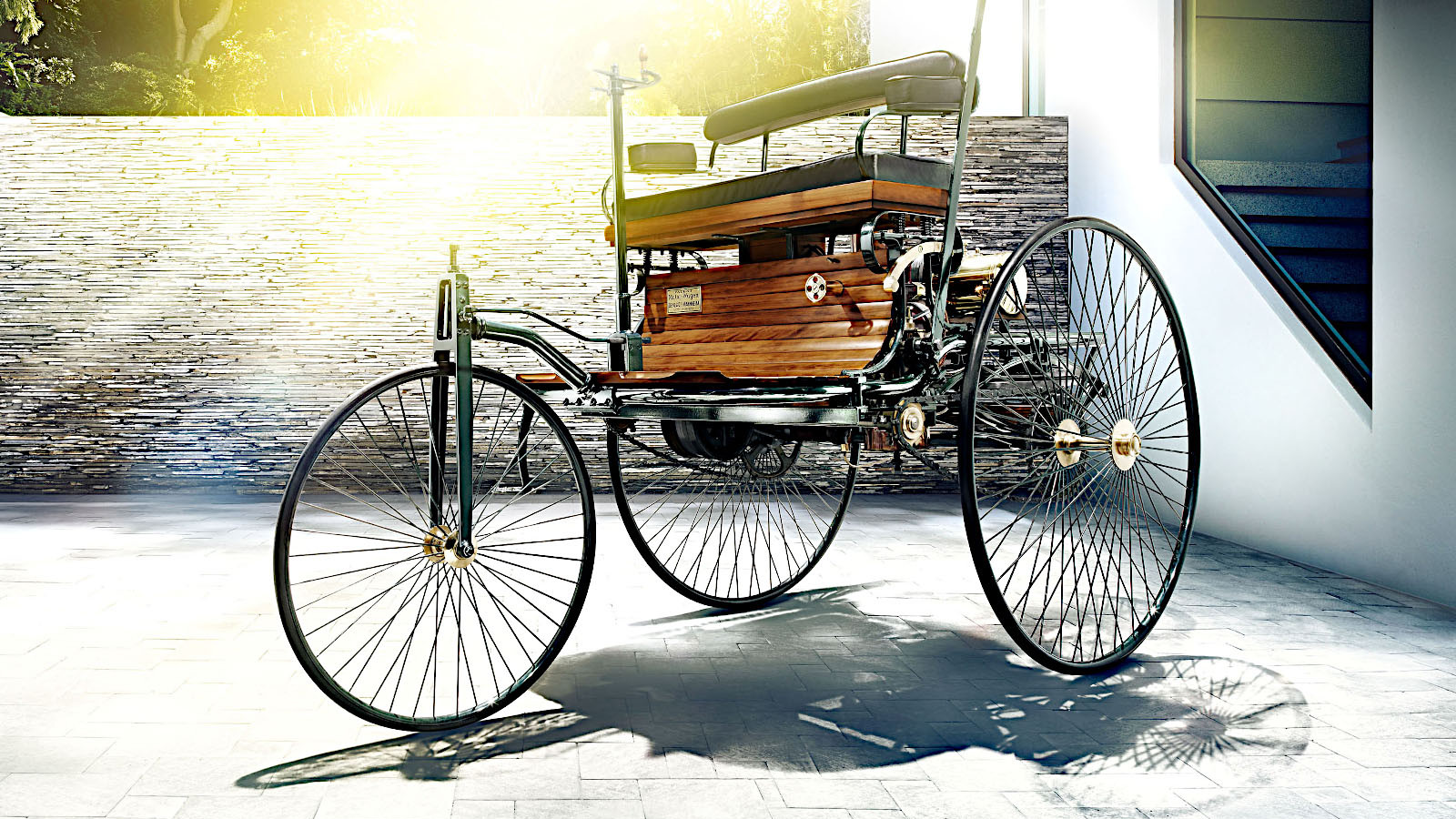 © Mercedes-Benz
© Mercedes-Benz -
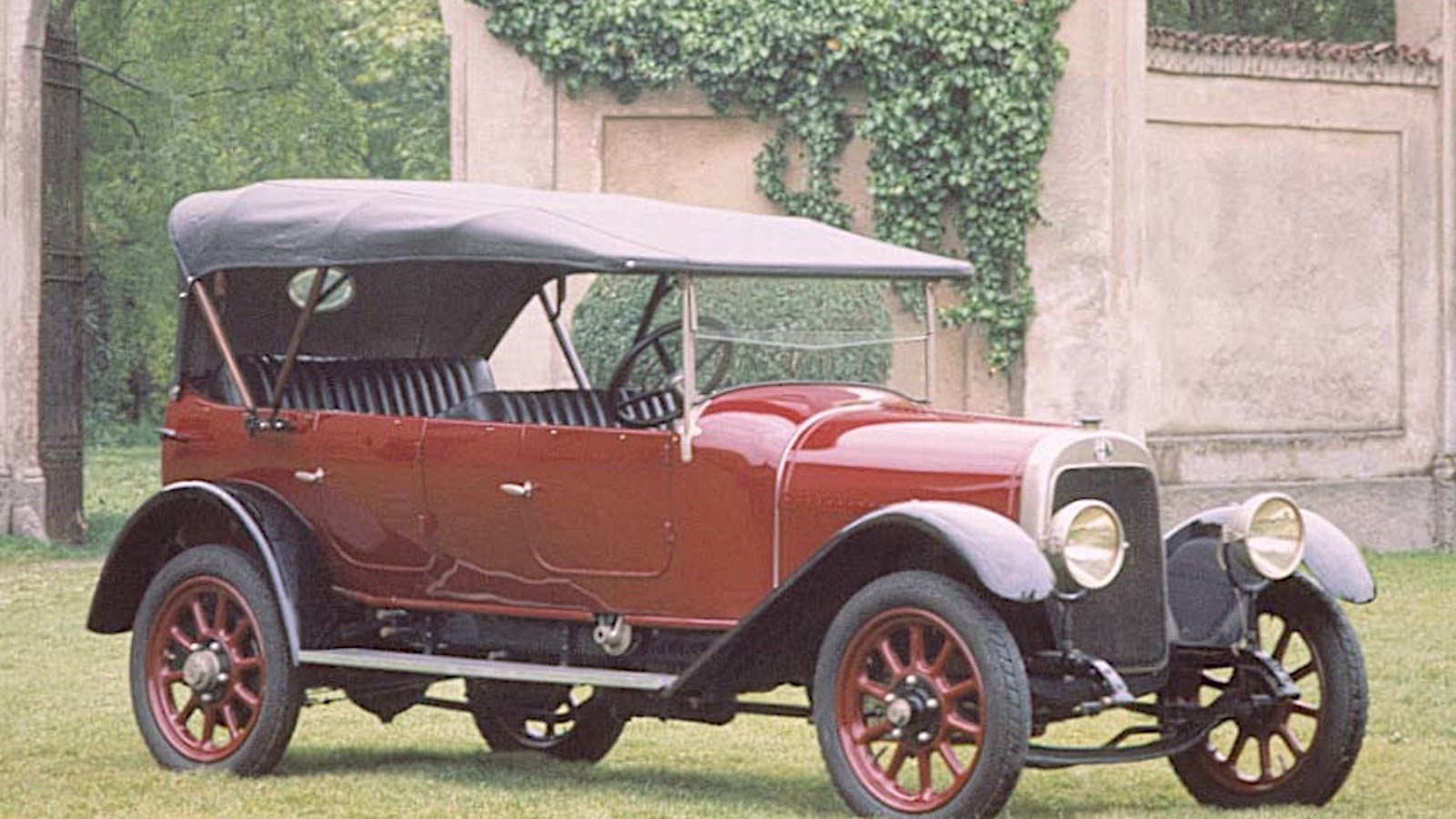 © Stellantis
© Stellantis -
 © Audi
© Audi -
 © Darin Schnabel/RM Sotheby’s
© Darin Schnabel/RM Sotheby’s -
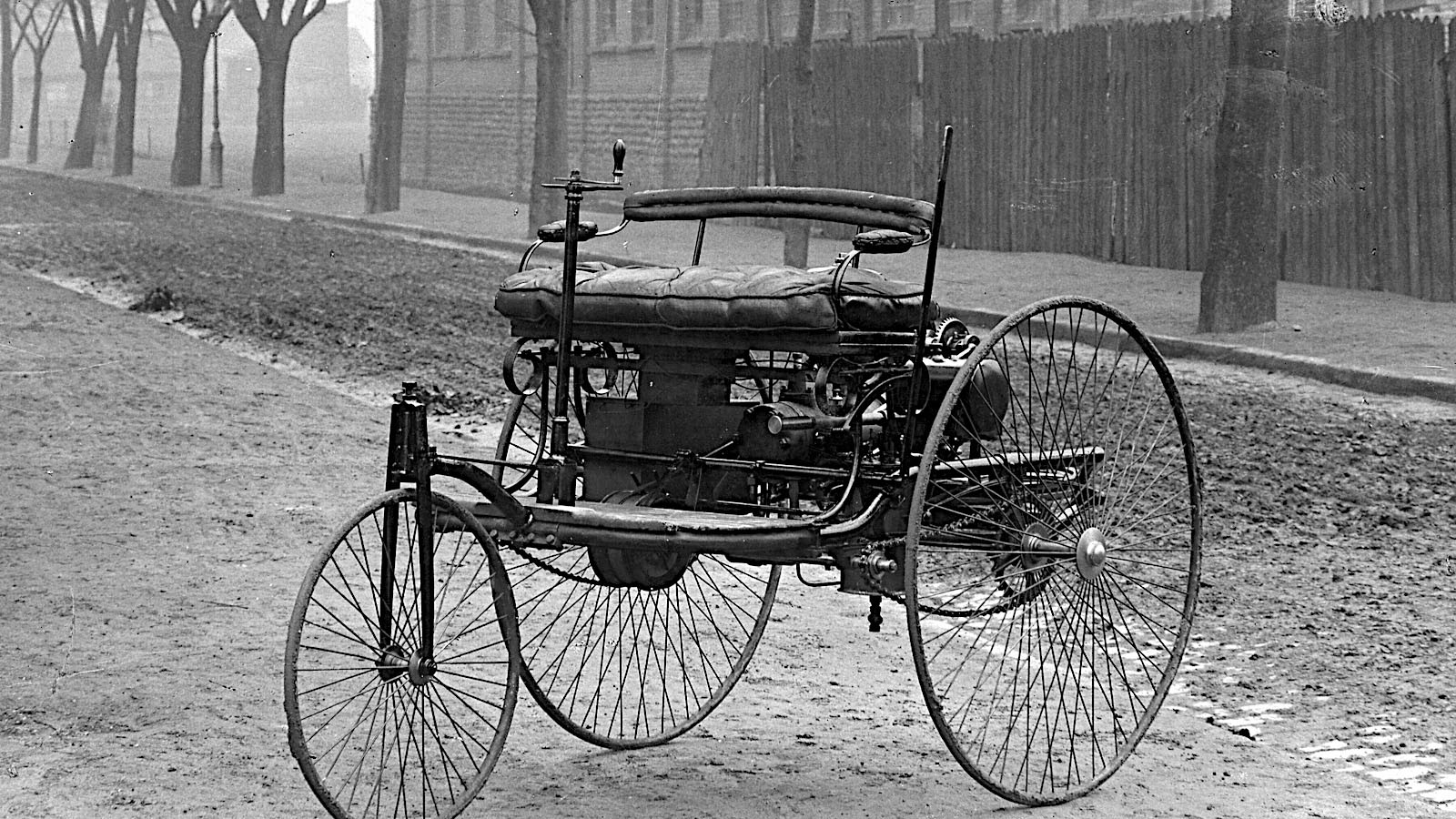 © Mercedes-Benz
© Mercedes-Benz -
 © BMW
© BMW -
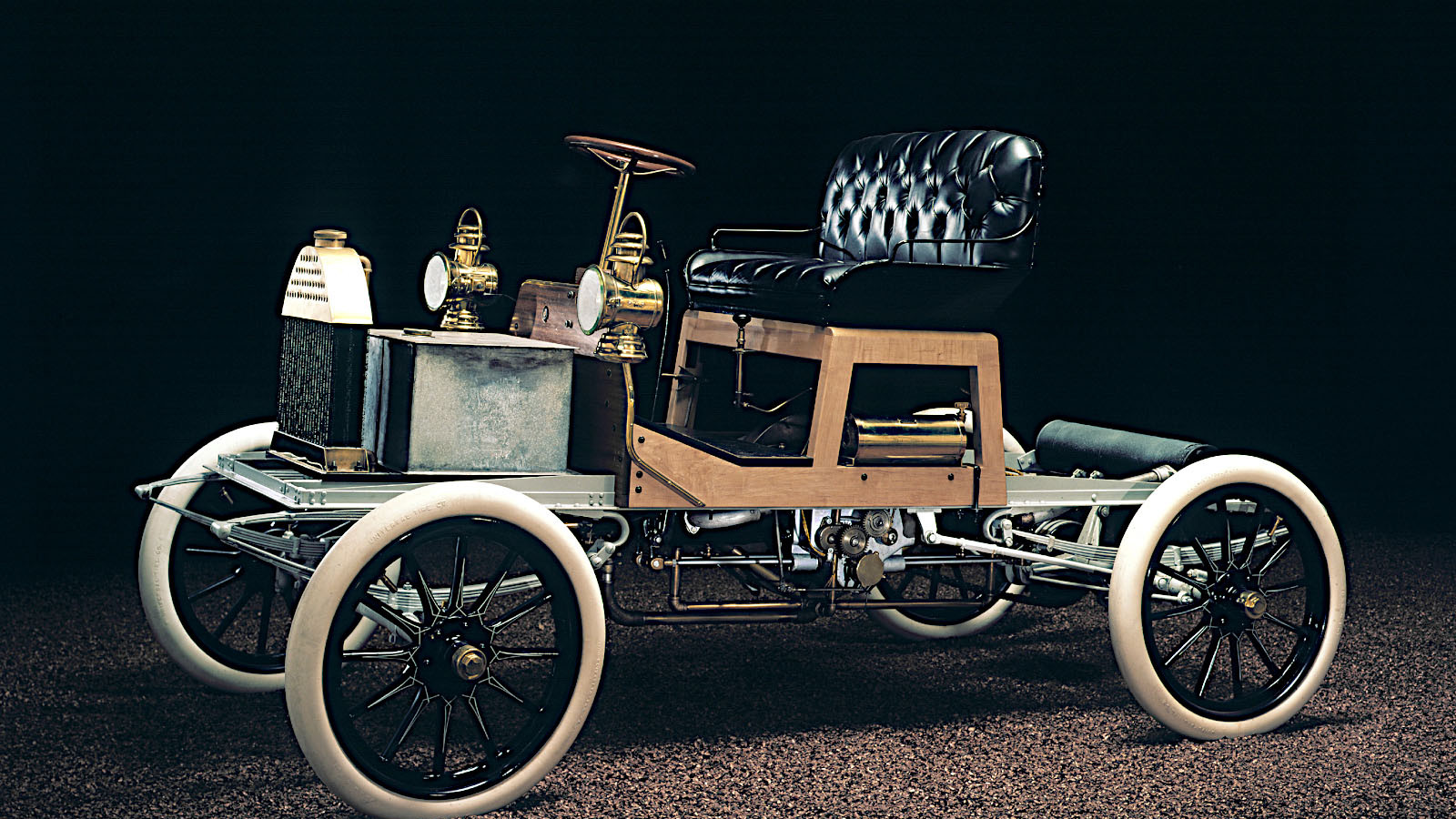 © General Motors
© General Motors -
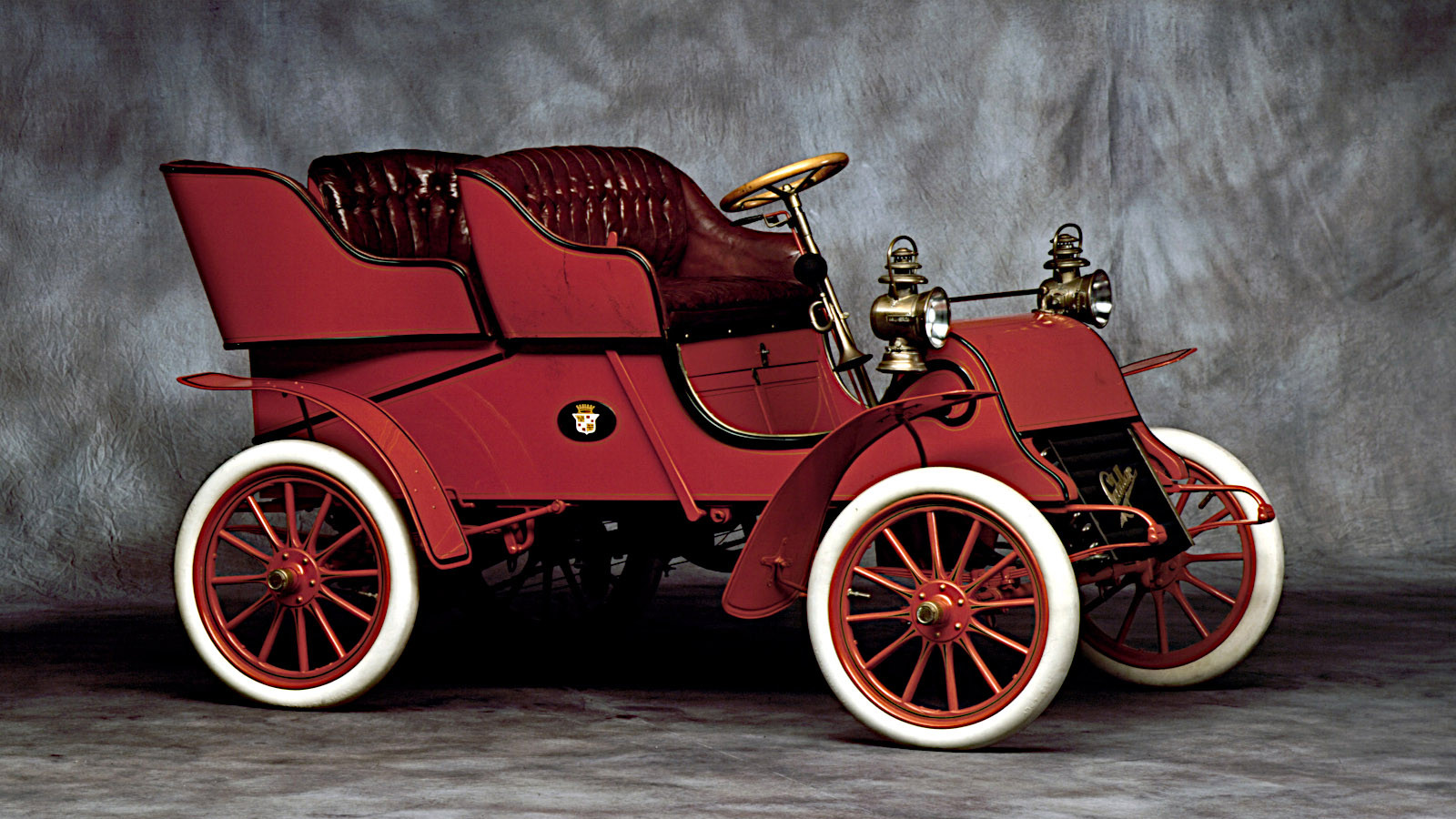 © General Motors
© General Motors -
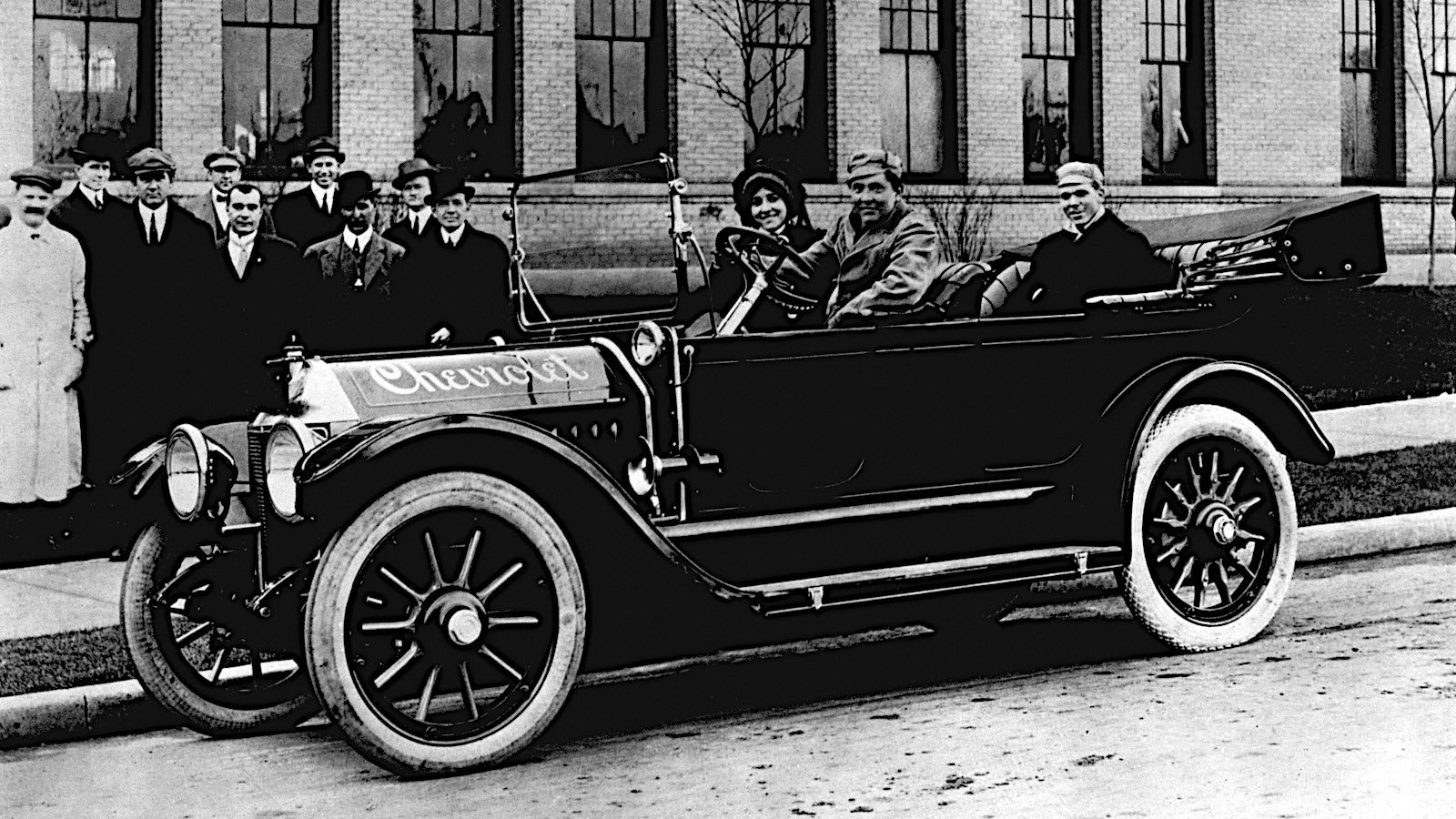 © General Motors
© General Motors -
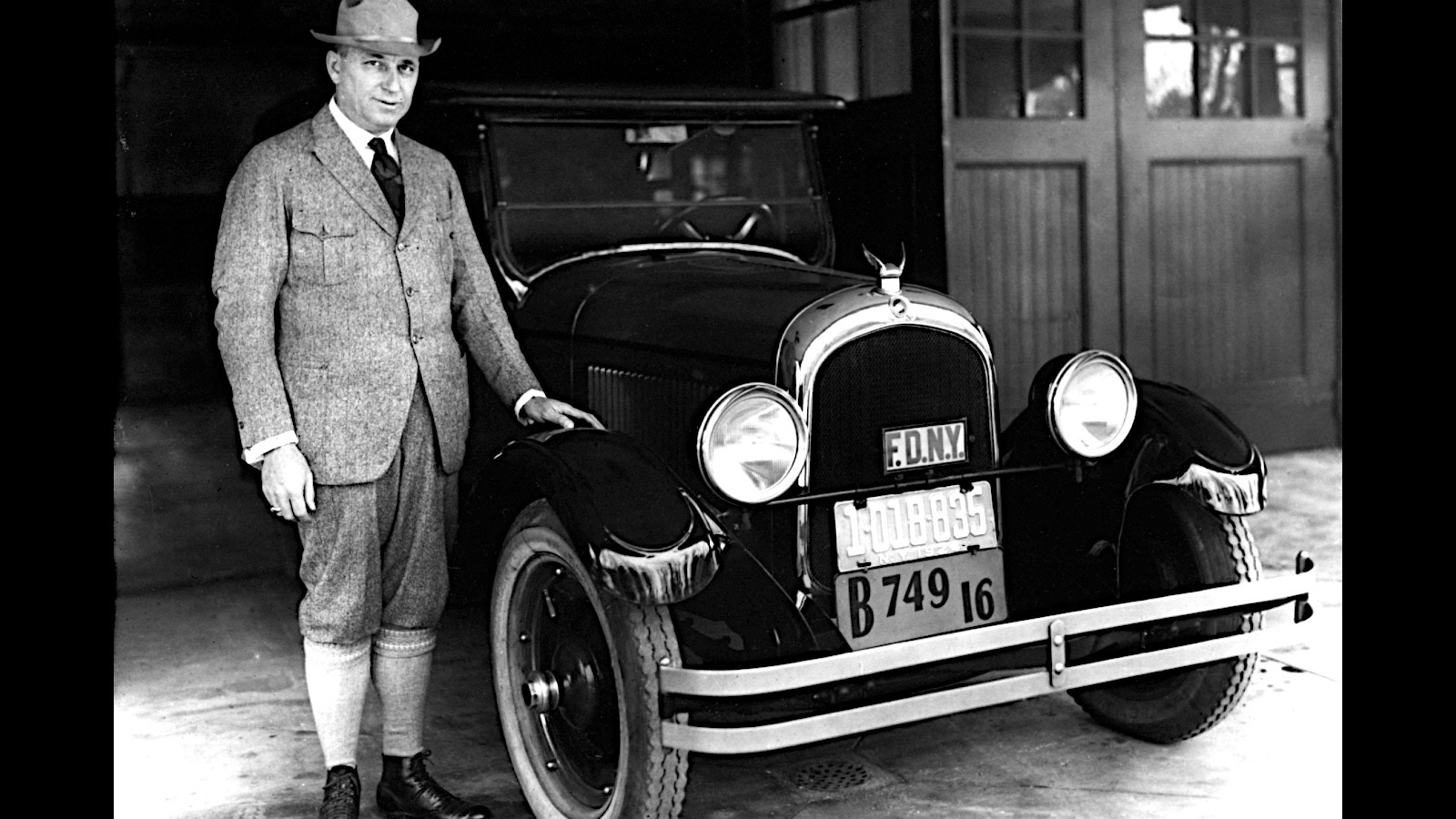 © Stellantis
© Stellantis -
 © Stellantis
© Stellantis -
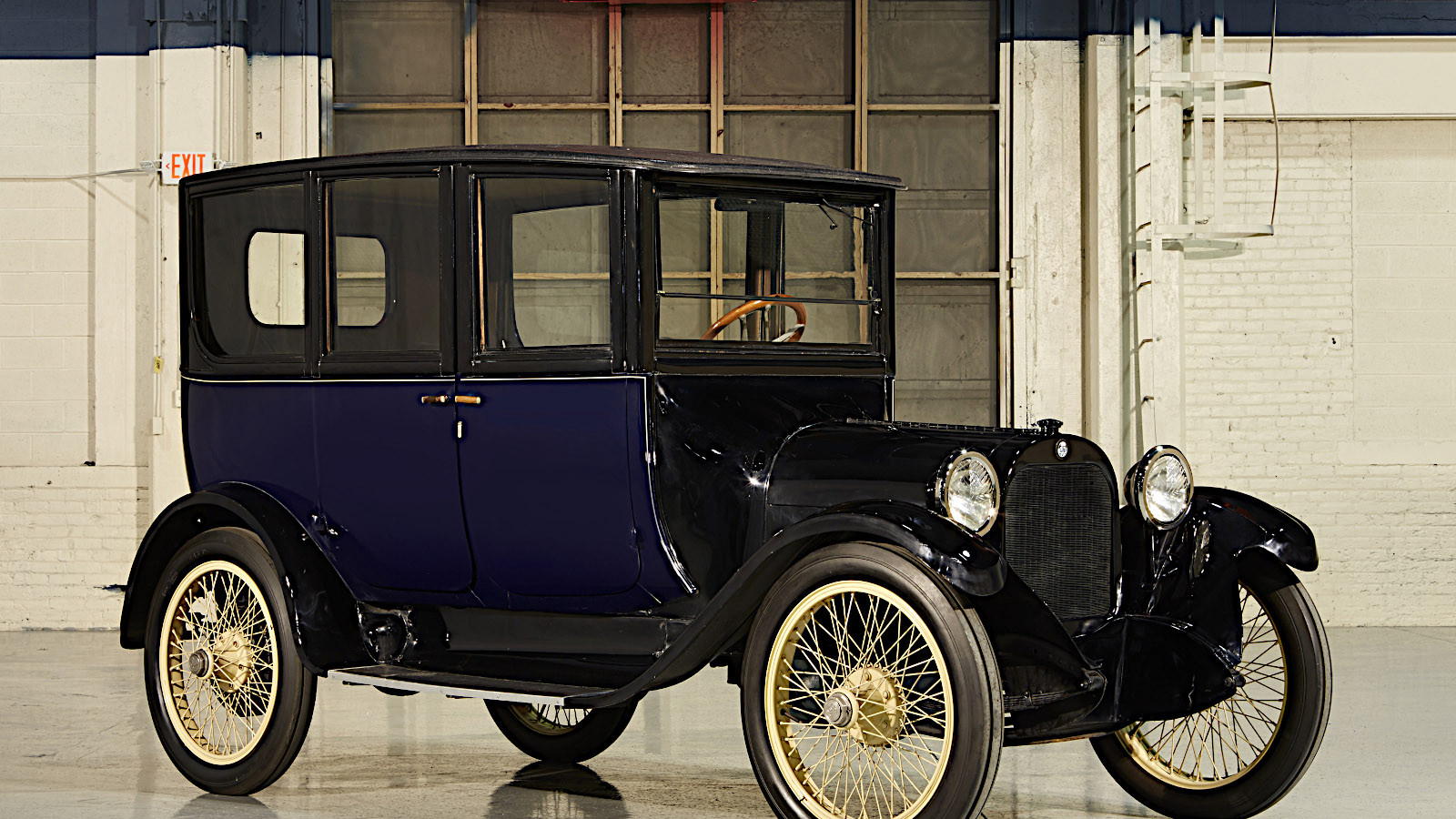 © Stellantis
© Stellantis -
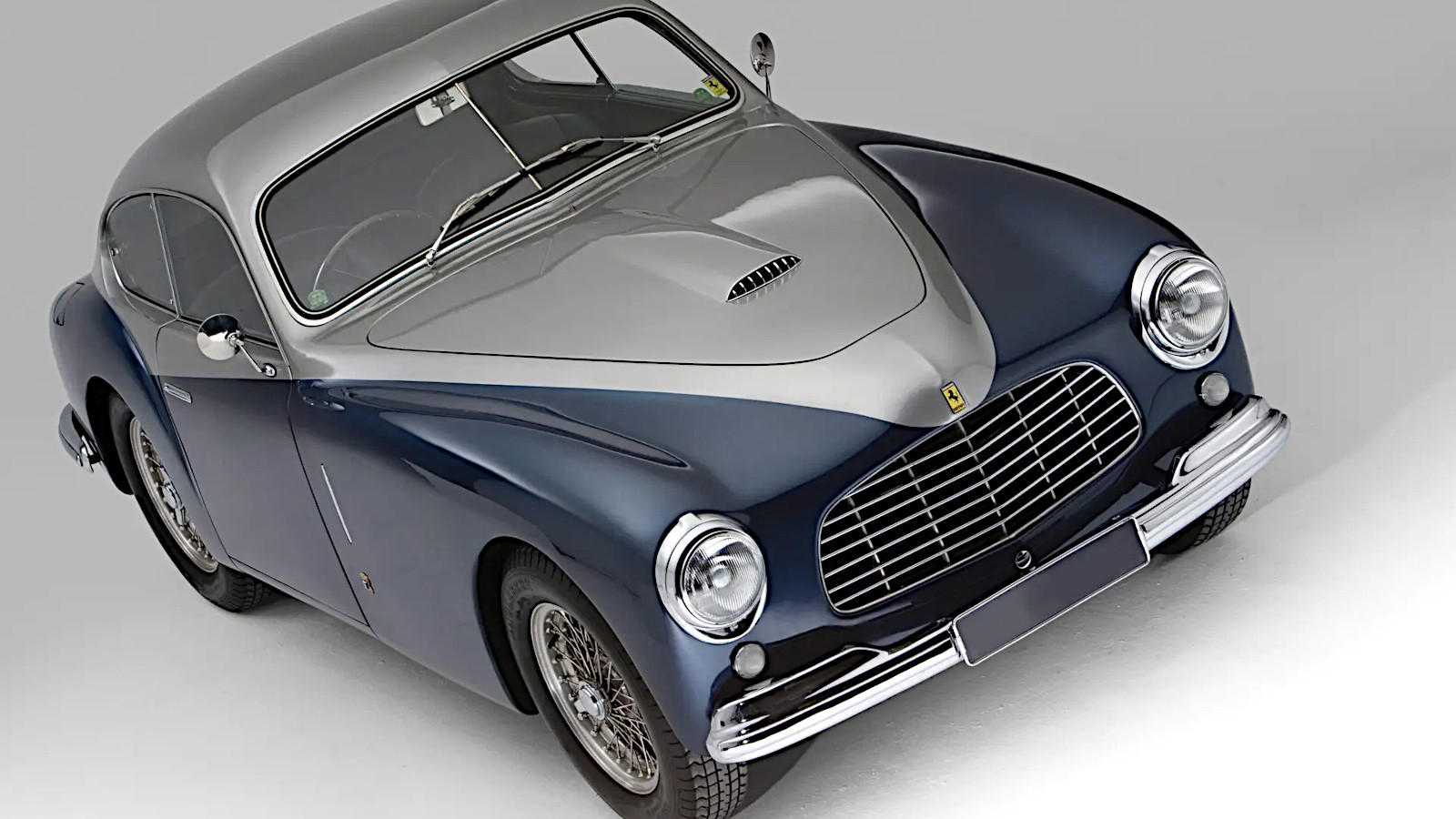 © Pieter E Kamp/RM Sotheby’s
© Pieter E Kamp/RM Sotheby’s -
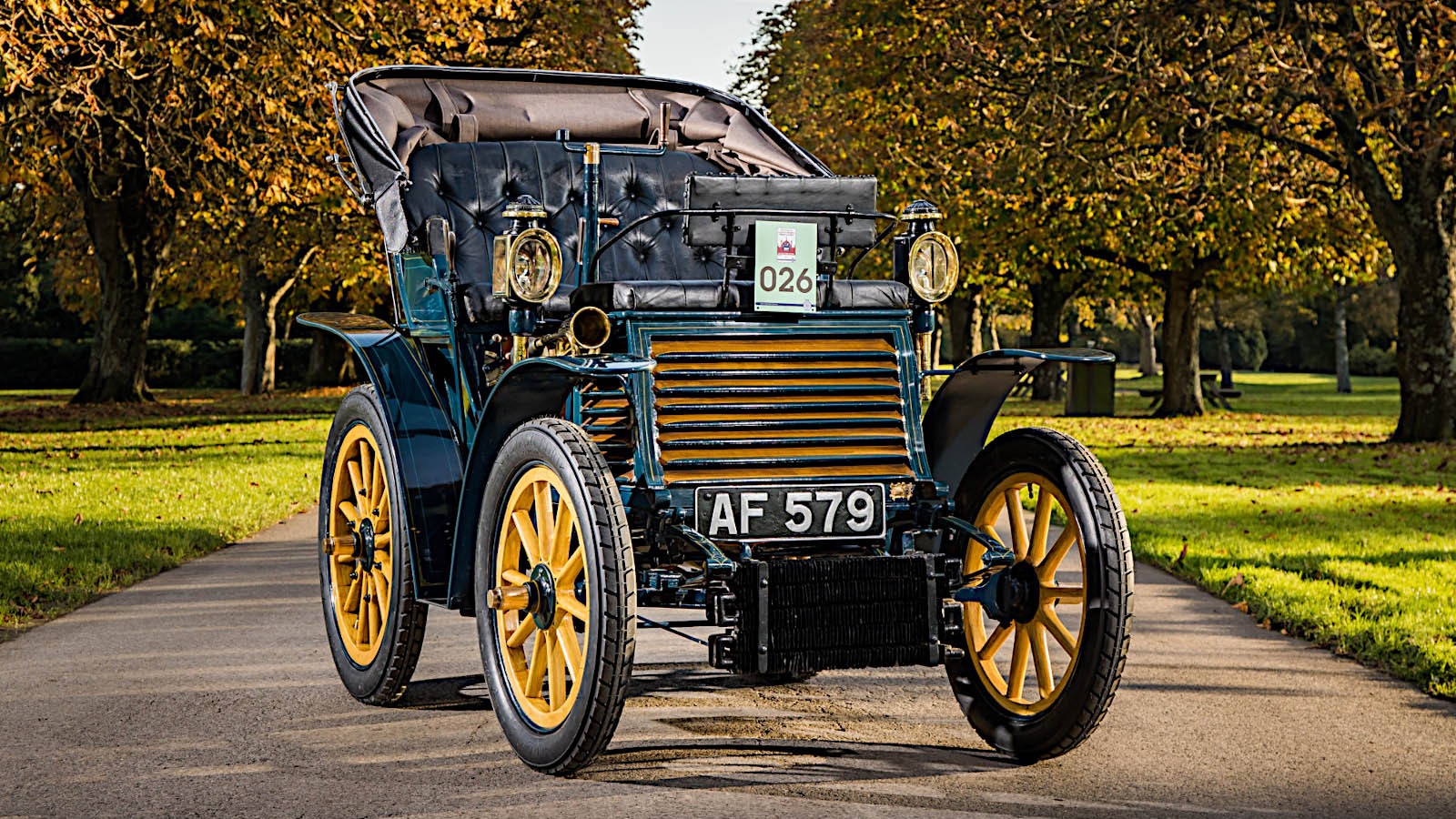 © Stellantis
© Stellantis -
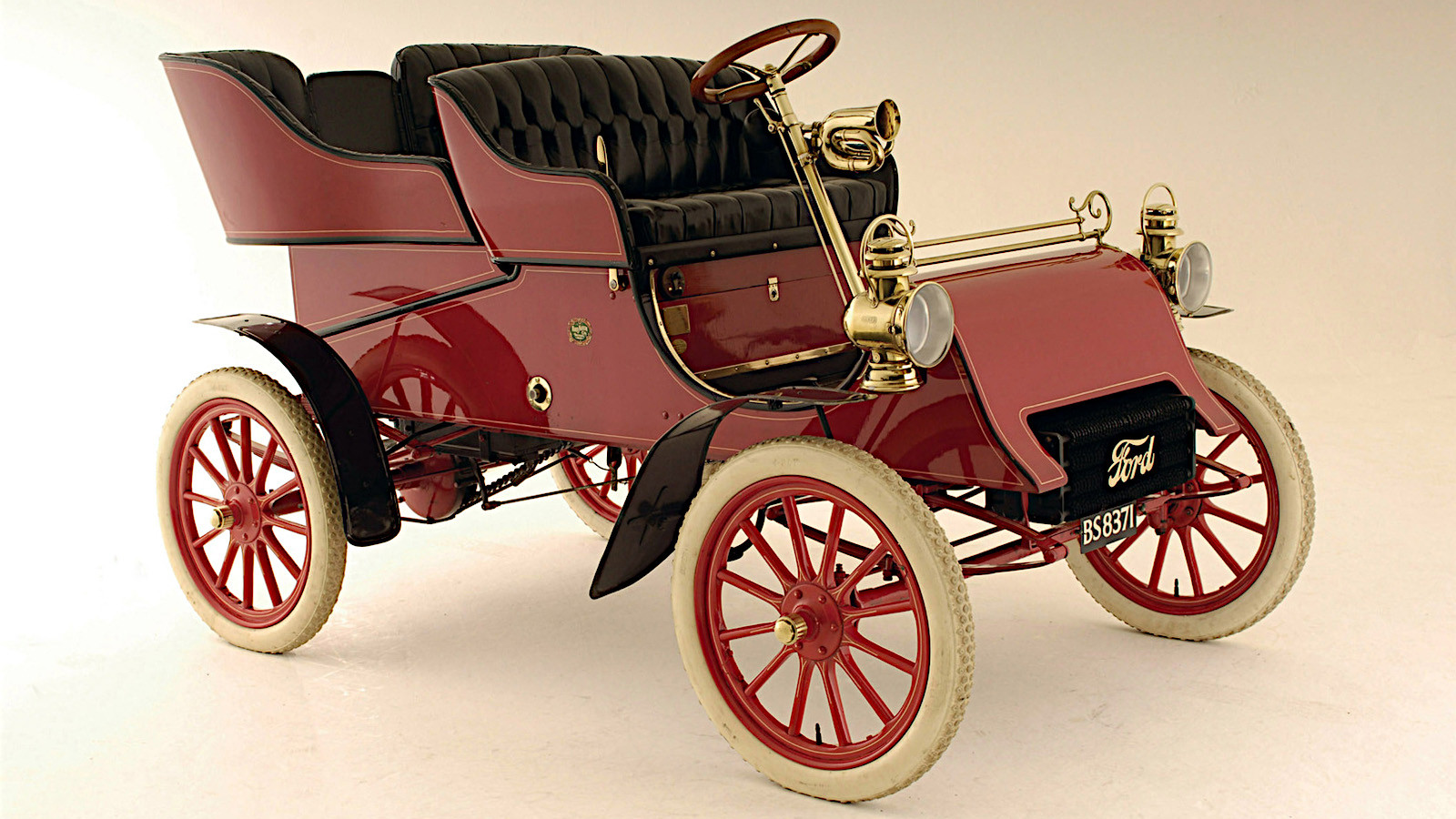 © Ford
© Ford -
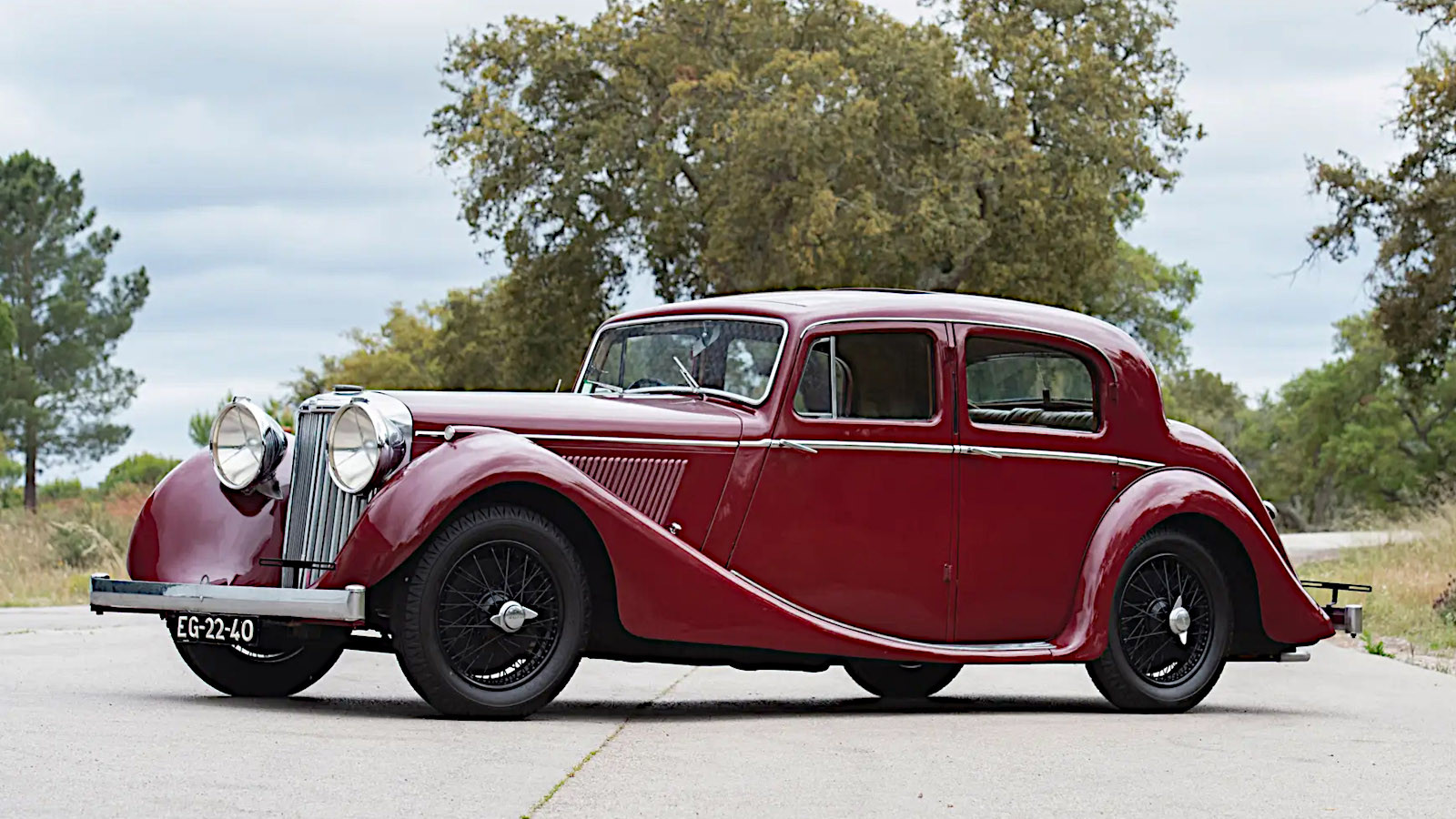 © Tom Wood/RM Sotheby’s
© Tom Wood/RM Sotheby’s -
 © Stellantis
© Stellantis -
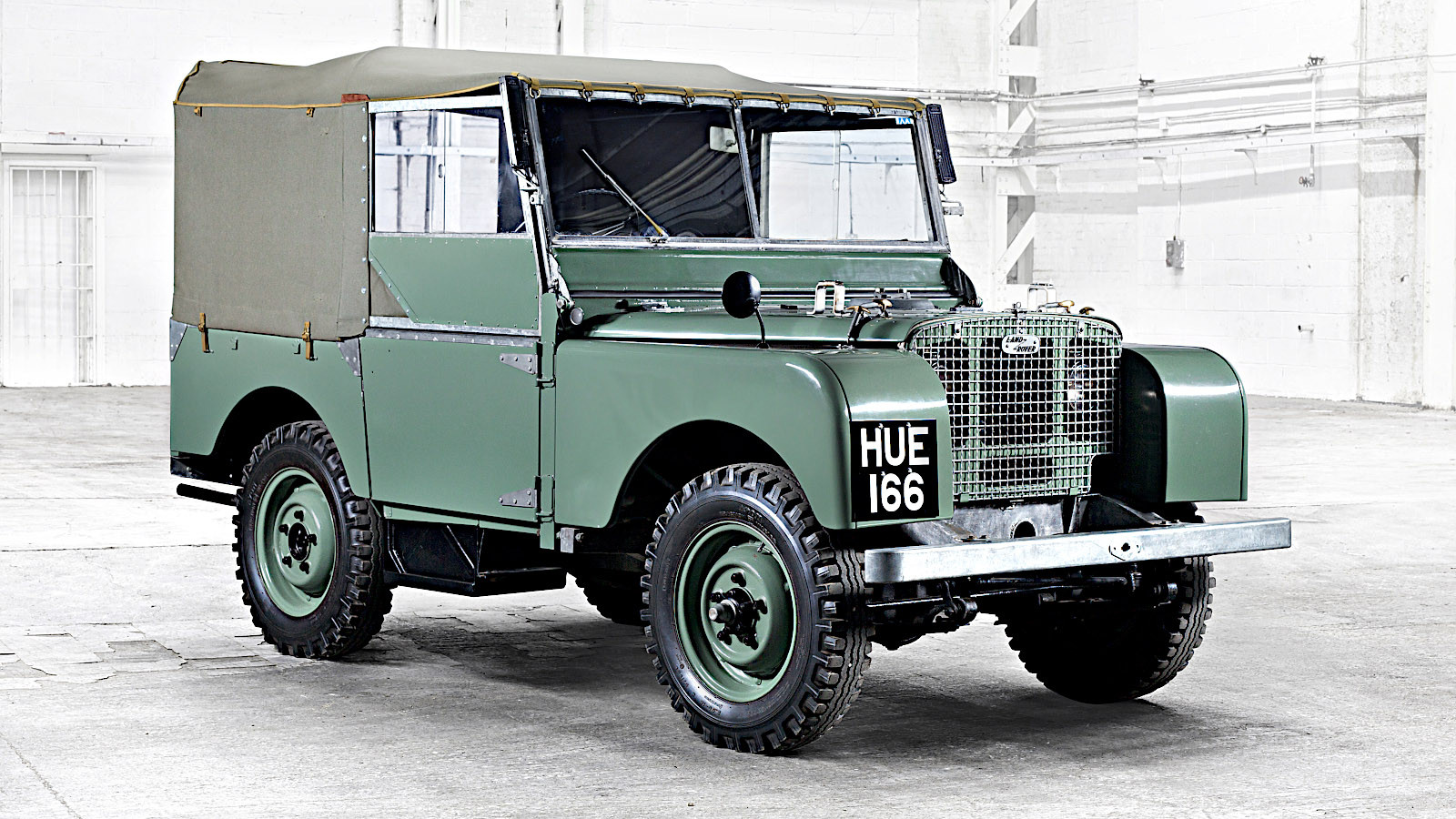 © Land Rover
© Land Rover -
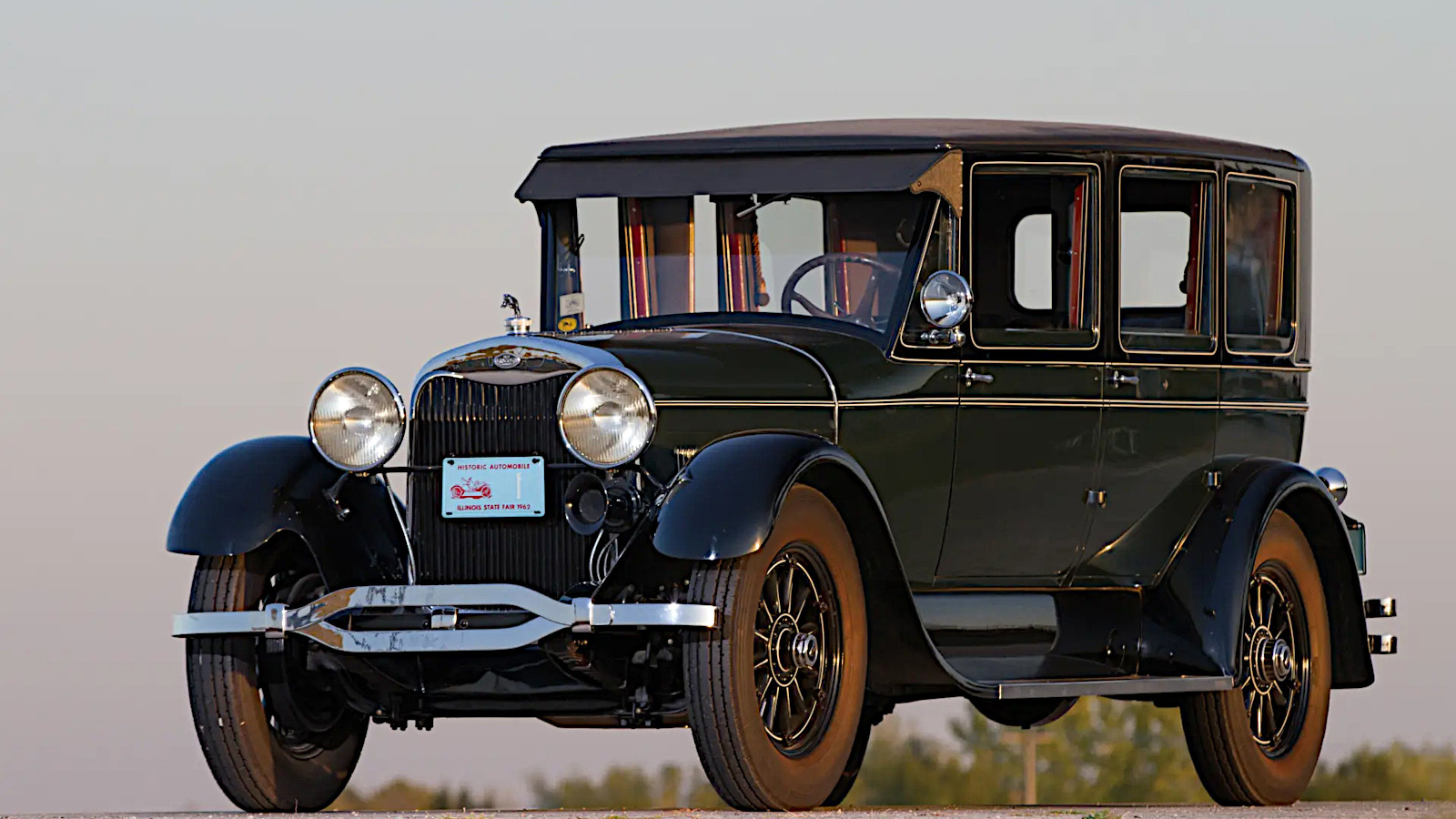 © Teddy Pieper/RM Auctions
© Teddy Pieper/RM Auctions -
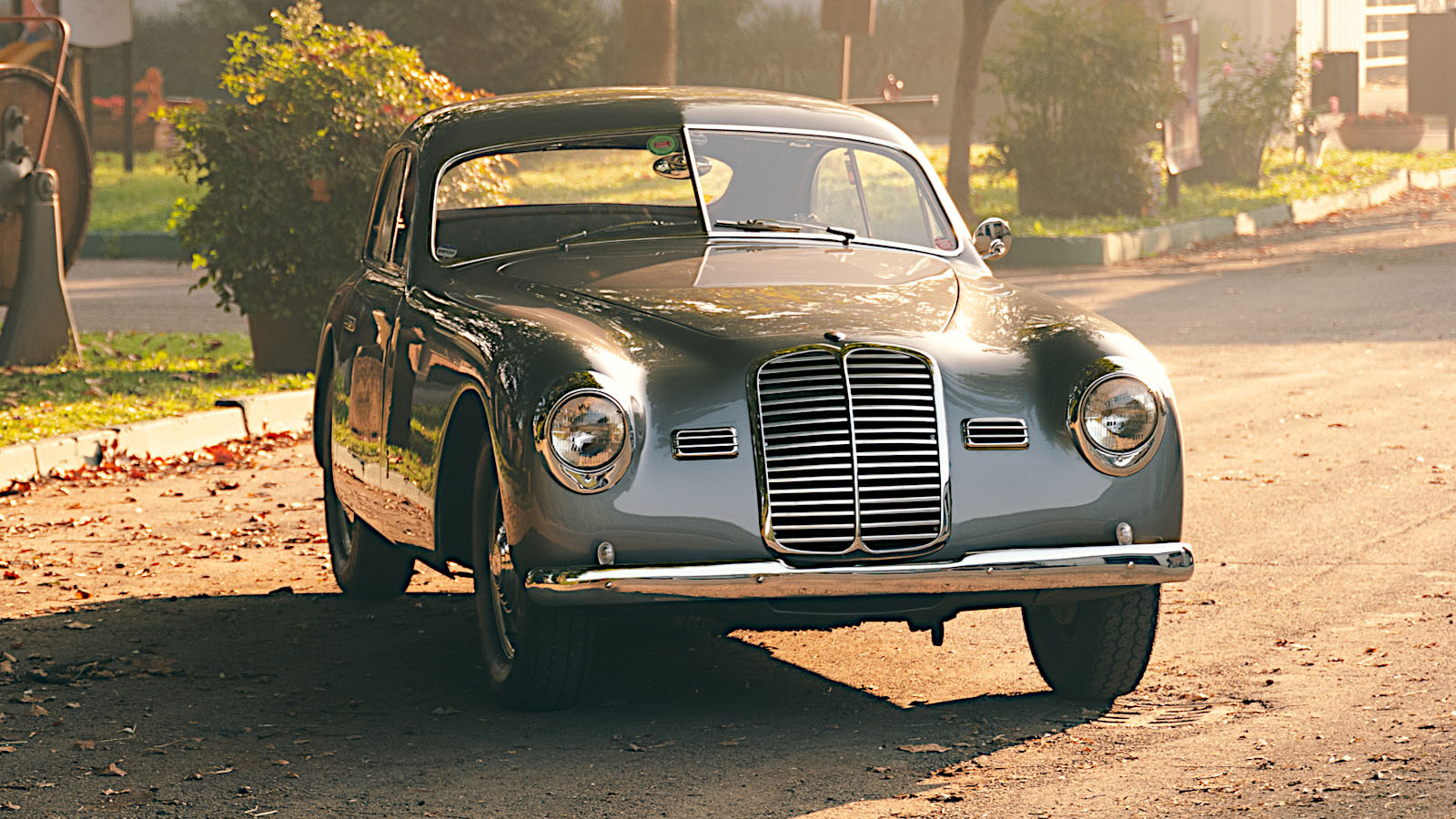 © Stellantis
© Stellantis -
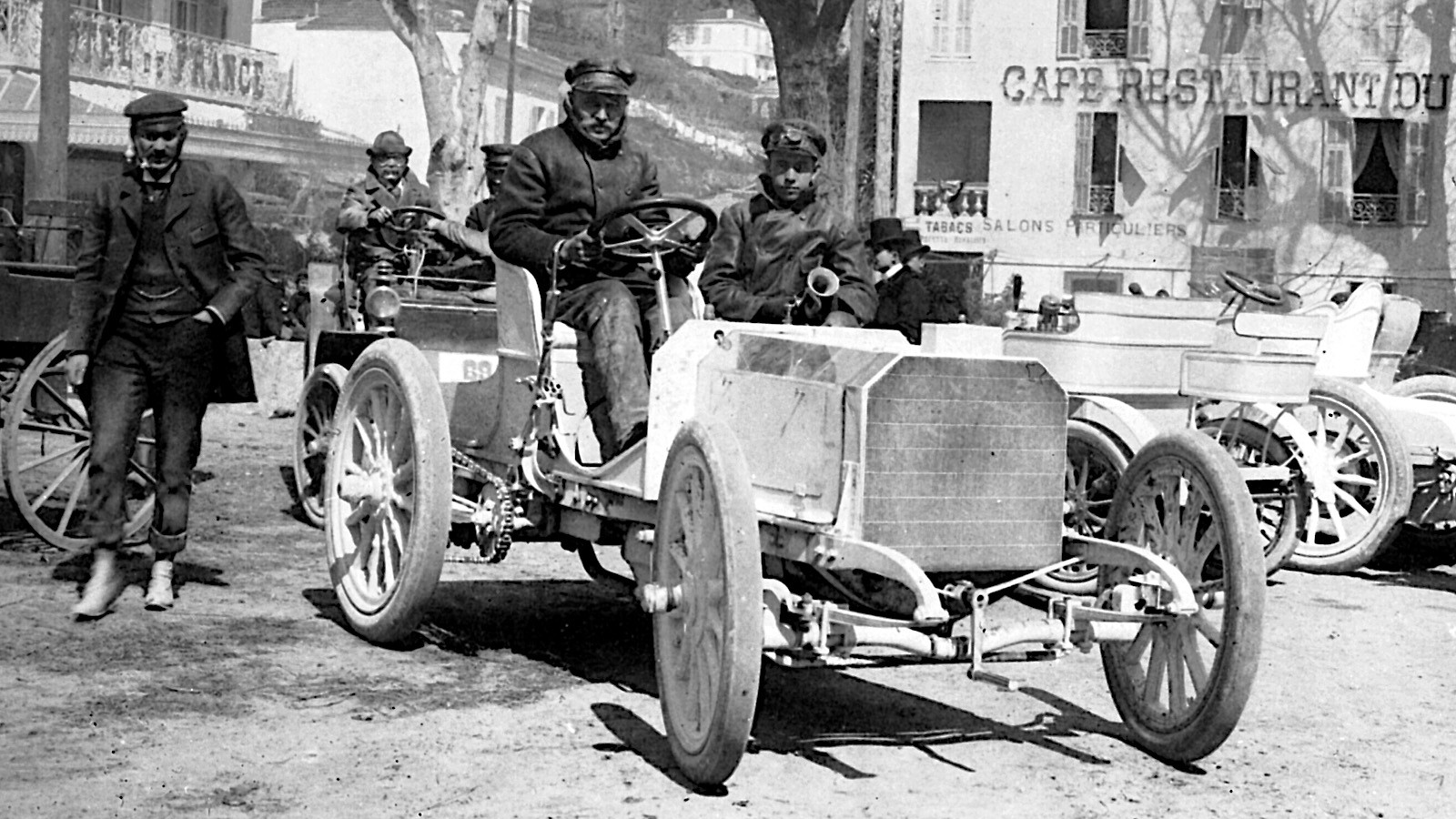 © Mercedes-Benz
© Mercedes-Benz -
 © Stellantis
© Stellantis -
 © Stellantis
© Stellantis -
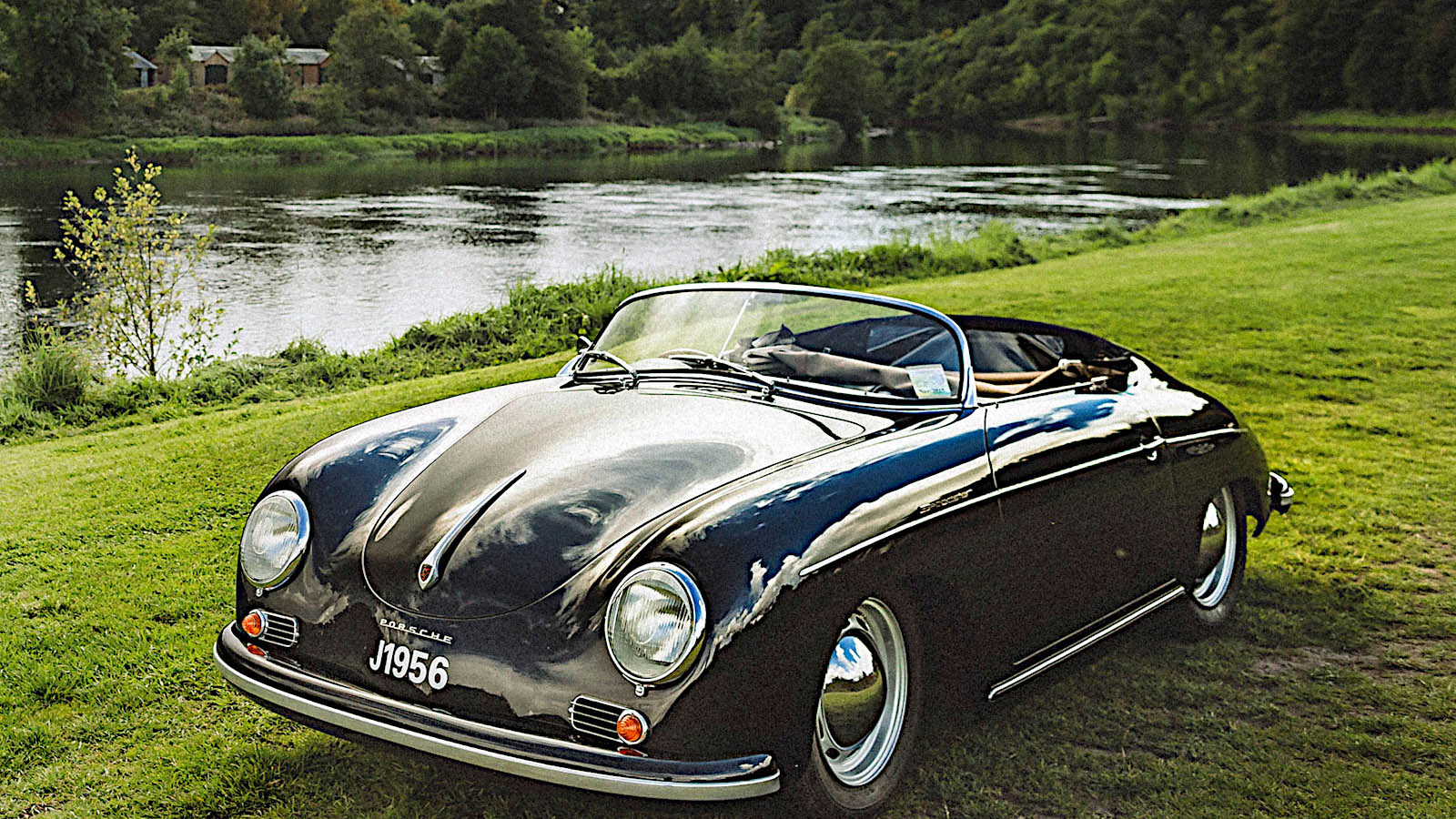 © Porsche
© Porsche -
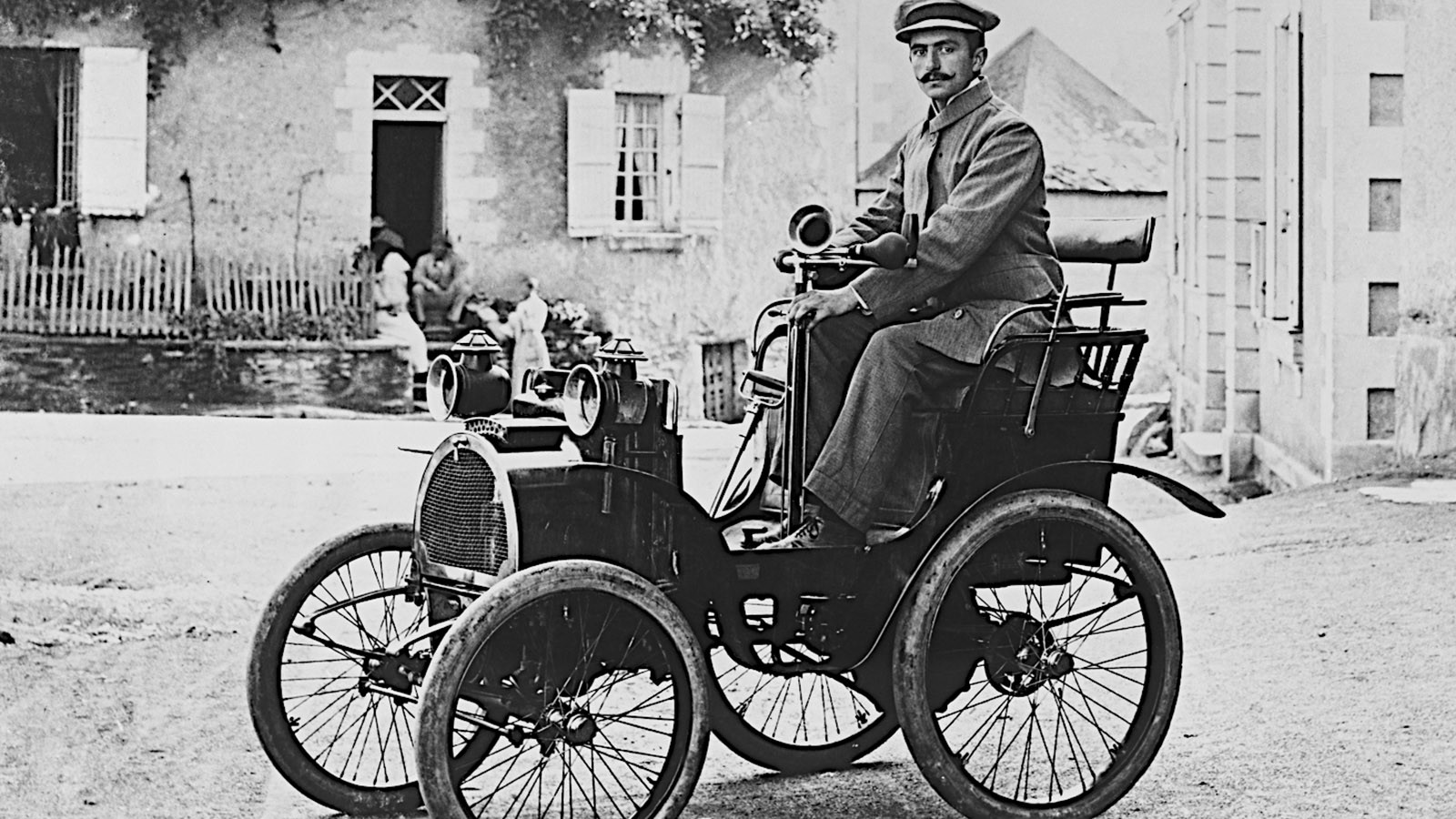 © Renault
© Renault -
 © Rolls-Royce
© Rolls-Royce -
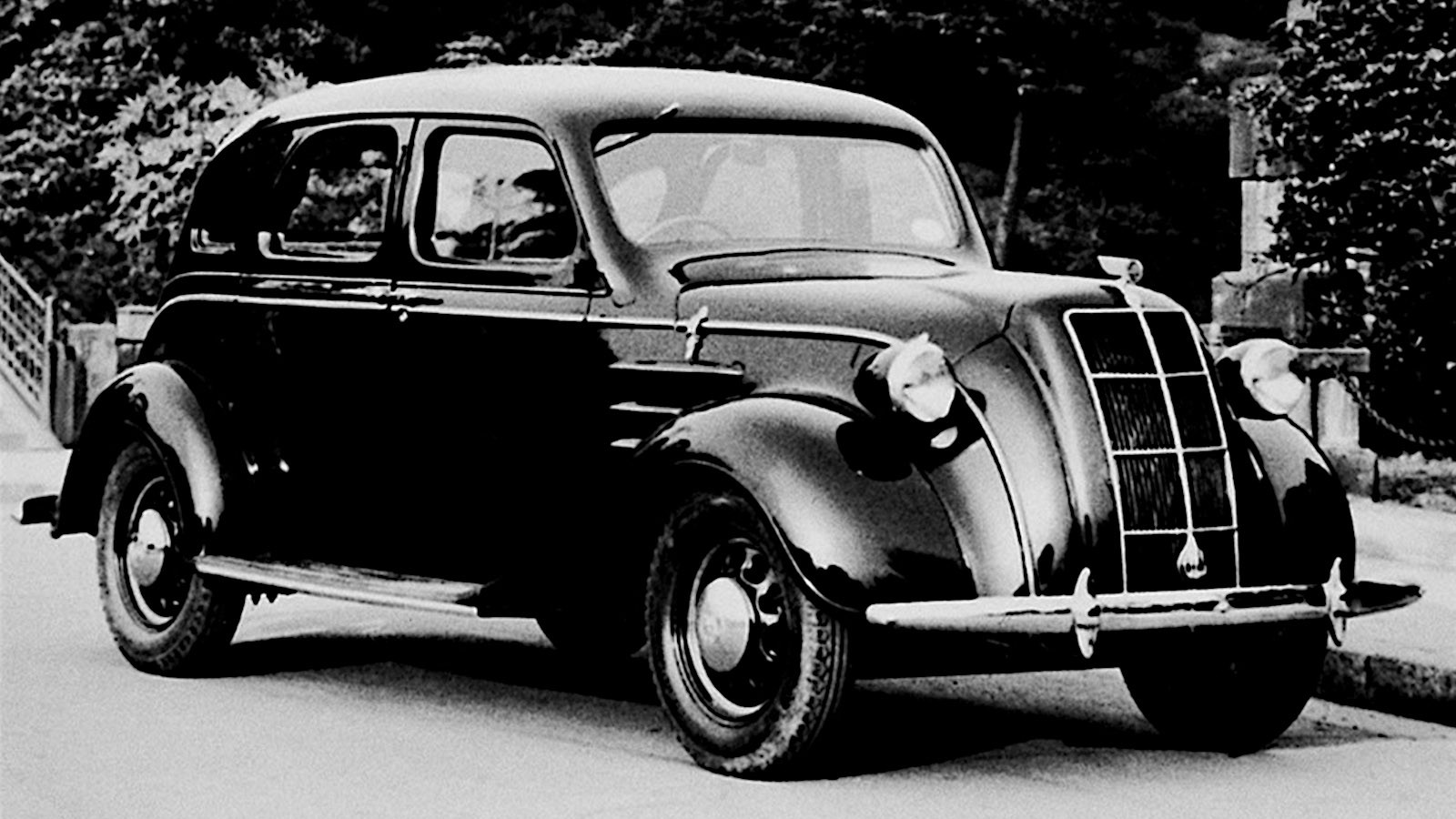 © Toyota
© Toyota -
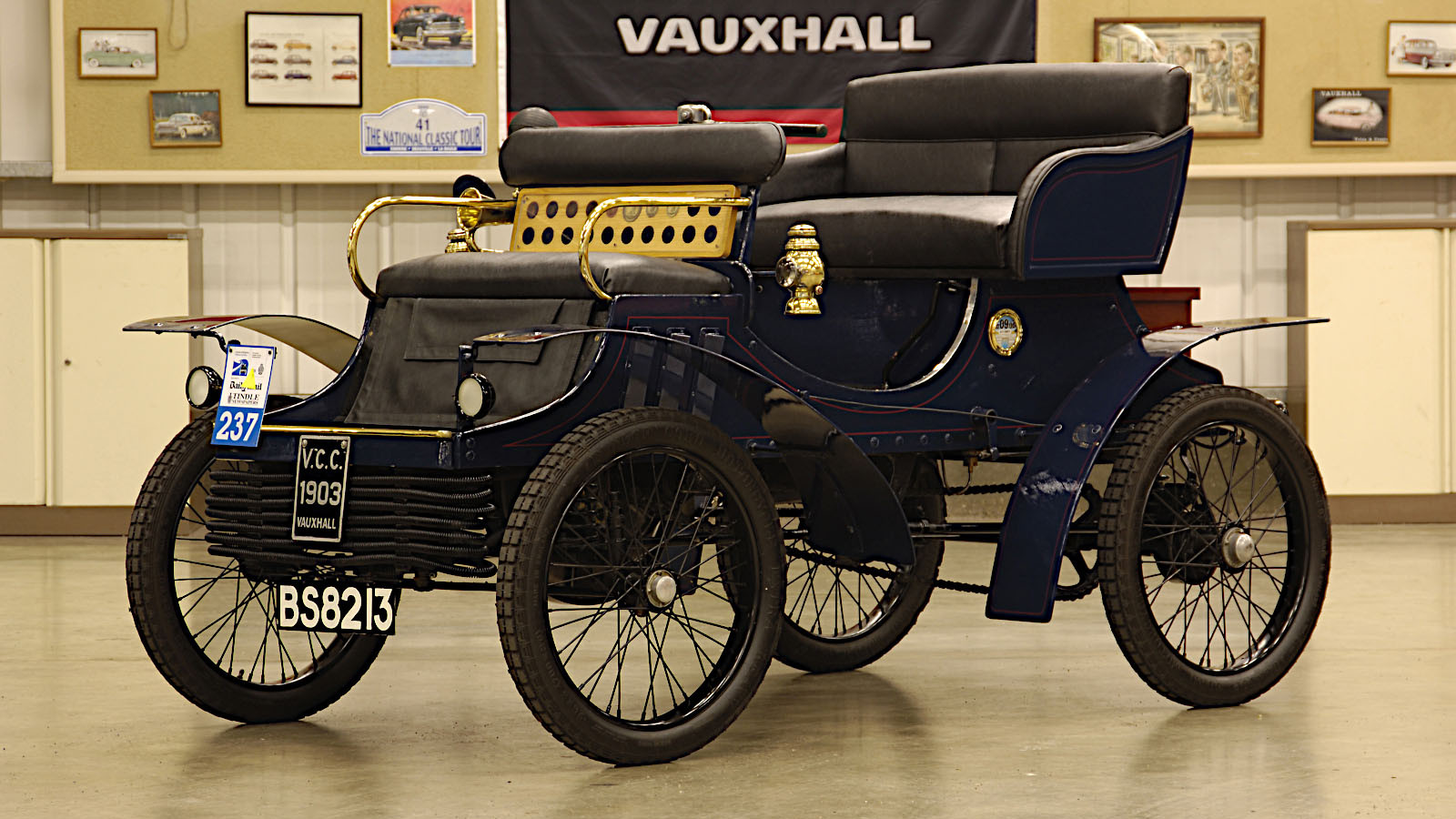 © Stellantis
© Stellantis -
 © Volkswagen
© Volkswagen -
 © Volvo
© Volvo
-
Back to the start
When a manufacturer has been around for many years, it can be fascinating to look at the first roadgoing car it ever made, so that’s what we’re going to do here.
To avoid taking up too much of your time (because we know you’re busy), we’re restricting ourselves to an alphabetical list of 29 marques which are still in existence today, and were founded before 1950.
Sometimes the exact first model can be difficult to determine for one reason or another, but we’ll deal with those on a case-by-case basis.
-
1. Alfa Romeo 20/30hp
The first car produced by the Anonima Lombarda Fabbrica Automobili was the 24hp of 1910, and since ALFA was the same brand as the one known today as Alfa Romeo, this seems to be the obvious contender.
However, it wasn’t the first car called Alfa Romeo.
That’s because the entrepreneur Nicola Romeo became involved during the First World War, and the company’s name was subsequently changed in his honour.
In 1920, the third of three models called 20/30hp became the first to be given that name, and is therefore the first Alfa Romeo, though not the first Alfa.
-
2. Audi Type A
August Horch set up a car manufacturing business under his own name in 1899, but later fell out with his colleagues and stomped off to create another one.
Audi – so named because audi in Latin means the same as horch does in German (they both translate into something like ‘listen!’ in English) – was founded in 1909.
Following the straightforward process adopted by several other marques in those days, the first Audi, a four-seater with a 2.6-litre engine, was called the Type A.
The Audi of that time is only indirectly related to today’s Audi, which would be called DKW if Volkswagen hadn’t repurposed that dormant name in 1965.
-
3. Bentley 3 Litre
Walter Owen Bentley’s spectacularly varied early career included spells as a locomotive apprentice, a motorcycle racer, a car dealer and a designer of aircraft engines.
Bentley Motors was established in 1919, and two years later it began production of its first car, the 3 Litre, named after the capacity of its engine.
Designed as a sporting road car, the 3 Litre did not put up a good showing in the 1922 Indianapolis 500 (“We just weren’t fast enough,” Bentley said later), but was far more successful in the Le Mans 24 Hours, which it won in 1924 and 1927.
-
4. Benz Patent Motorwagen
Although Benz is no longer a stand-alone brand, it is still current in the sense that it is part of Mercedes-Benz.
Its first car, the Patent Motorwagen, is also arguably the first car made by anyone, though this depends on how you define what a car actually is.
Carl Benz built the first version in 1886, but we might not have heard of it had it not been for the fact that his wife Bertha took a later example on the world’s first road trip two years later.
This adventure (which Carl knew nothing about until Bertha had left the house) attracted enormous publicity for the car, and has been described as ‘the journey that changed everything’.
-
5. BMW 3/15
By the standards of the major car manufacturers operating today, BMW’s entry into the motor industry was remarkably gentle.
In 1928, it bought Fahrzeugfrabrik Eisenach, and inherited that company’s Dixi 3/15 model, which was simply an Austin Seven built under licence in Germany.
After several updates, the 3/15 was replaced in 1932 by the 3/20, which had some Austin influence but was sufficiently different to be considered the first car designed entirely by BMW.
-
6. Buick Model B
In defiance of contemporary practice, the first Buick sold to the public was called the Model B, though it may be significant that David Dunbar Buick’s company had previously built other cars without putting them into series production.
Buick had started out building engines, and the one in the Model B was very advanced, with what would now be described as overhead valves (though, since the motor was a flat-twin, they were actually beside the cylinders, rather than above them).
It came out in 1904, and four years later Buick became the cornerstone of William Durant’s wildly successful conglomerate, General Motors, which it is still part of today.
-
7. Cadillac Model A
Cadillac was originally a reorganisation of Henry Ford’s second car company, which Ford left in 1902.
Later that year, the new brand began selling what is now known as the Model A, though at the time it was called either the Runabout (pictured) or the Tonneau, depending on its body style.
Cadillac is three years younger than Buick, but was the first to put a vehicle on sale.
The Model A is therefore the earliest car produced by a US manufacturer still in existence today.
-
8. Chevrolet Series C
In between being ousted from General Motors (which he had founded) and buying his way back in, William Durant teamed up with expatriate Swiss racing driver Louis Chevrolet to produce cars bearing the latter’s surname.
Their first model was known, on its introduction in 1912, simply as Chevrolet, though it is now referred to by other names including Series C and Classic Six.
Whatever you call it, the car was rather grand and expensive, which was contrary to Durant’s idea of how the company should proceed.
When Louis Chevrolet left the company, Durant took control, began producing cheaper models and made so much money so quickly that he was able to force his way back into GM.
-
9. Chrysler Six
After making a colossal amount of money working for first Buick and then Willys, Walter Chrysler (pictured) bought the Maxwell company in the 1920s and turned it into a brand he named after himself.
Its first model (also pictured) was officially named B-70, but is usually known as the Chrysler Six after its flathead straight-six engine.
With appropriate upgrades, the same unit would power other Chryslers, Dodges, Plymouths and DeSotos well into the 1960s.
-
10. Citroën Type A
Citroën hit the ground running with its Type A, which went on sale in 1919.
It was discontinued before the end of 1921, but by then the company had built 24,093 examples – unimpressive by American standards, but a phenomenal rate of production for a European car of the period.
Powered by a 1.3-litre engine, it could achieve 40mph, and was available in many forms including a passenger car, an ambulance and several kinds of commercial vehicle.
-
11. Dodge 30-35
Brothers John and Horace Dodge ran a successful business making parts for other manufacturers before deciding to build a car of their own.
It was available as a four-door tourer or a two-door roadster, both powered by a 3.5-litre, four-cylinder engine.
Since it was produced only from 1914 to 1916, the 30-35 substantially predated Dodge’s acquisition by Chrysler in 1928, eight years after the death of both brothers.
-
12. Ferrari 166 Inter
The first car designed by Enzo Ferrari was the Auto Avio Costruzioni 815 of 1940, and the first to bear his name was the 125 S which appeared seven years later.
Although they could both be driven on public roads, they were intended for competition, so we’ll pass over them and move on to 1948, when Ferrari began building the 166 Inter.
This was related to the contemporary 166 racers, but it was a grand tourer, available with coupé and sometimes convertible bodies, produced either by Ferrari itself or by independent coachbuilders.
It was powered by a 2-litre version of Gioacchino Colombo’s famous V12 engine, which started out at 1.5 litres in the 125 S and would reach 4.9 litres before it was discontinued in the late 1980s.
-
13. Fiat 3.5hp
Like BMW with the 3/15, Fiat took over production of its first car rather than designing it.
The story begins with Giovanni Ceirano, one of four Italian brothers who created car companies the way other people collect stamps.
This Ceirano developed the 3.5hp and began selling it in 1899 under the name Welleyes, which he also used for the bicycles he was manufacturing at the time.
He tired of it very quickly, and sold the rights to a group of investors who founded the Fabbrica Italiana Automobili di Torino, better known today as Fiat.
-
14. Ford Model A
Henry Ford’s third attempt to establish a car company was the one that stuck, and led to the global brand we all know today.
Its Model A of 1903 was very similar to the previous year’s Cadillac of the same name – not very surprising when you remember that, as mentioned previously, Cadillac was a reorganisation of Ford’s second company.
One significant difference was that, while the Cadillac had a 1.6-litre, single-cylinder engine, the Ford was powered by a very slightly larger flat-twin.
This Model A should not be confused with the later one which replaced the Model T and was produced from 1928 to 1932, but we’re sure you weren’t going to do that.
-
15. Jaguar MkIV
There’s an argument for saying that the first Jaguar was in fact the first SS, as the company was known before its directors decided in 1945 to avoid possible confusion with the paramilitary wing of the Nazi Party.
The original SS dates from 1931, and five years later Jaguar appeared as a model name for the first time.
However, the first cars marketed as Jaguars were what are now known as the MkIVs, which were not called that at the time, but were named after their 1.5-, 2.5- and 3.5-litre engine capacities.
Introduced in 1946, all of them were mild updates of pre-war designs, so they were hardly new, but as far as their branding is concerned, they were the first Jaguars.
-
16. Lancia 12hp
The Lancia 12hp was introduced in 1908 and was used both as a road car (like the very smart Double Phaeton pictured here) and, with very different bodywork, as a racer.
In 1919, long after its brief production life had come to an end, it was retrospectively renamed to match Lancia’s policy of using letters of the Greek alphabet.
Naturally, it was given the first one, which is rendered in English as ‘alpha’.
In Italian, which has no ‘ph’, the word is spelled ‘alfa’ (though both spellings are used, sometimes even by the same source), but there is no connection with any car produced by Alfa Romeo.
-
17. Land-Rover
Land-Rover became a company in 1978, so by the logic we used for Jaguar it would be reasonable to say that its first model was not produced before that year.
However, it’s customary to date Land-Rover history back to 1948, when vehicles with that name came on the market.
At the time, they were simply part of the Rover range, different from but exactly contemporary with a variety of saloon cars.
Although the name was changed in 1990, you can draw a straight line between the original Land-Rover and the final Defender which left the factory in January 2016.
-
18. Lincoln Model L
Although it’s now Ford’s luxury brand, Lincoln was founded as an independent company in 1917 to build Liberty V12 aero engines for use in the First World War.
The bottom dropped out of the military aircraft engine market in 1918, for obvious reasons, so Lincoln was reorganised and became a car manufacturer, launching its very high-class Model L in 1920.
This was a much-less profitable enterprise than building Liberty engines, so within two years founder Henry Leland decided to sell, which is where Ford came in.
The Model S survived that upset, and remained in production in various forms (such as the 1927 seven-passenger Berline pictured here) until 1930.
-
19. Maserati A6
Maserati was established in 1914, but for more than 30 years it concentrated entirely on building competition cars.
Its first roadgoing model was the A6, which appeared in 1947, a full decade after the founding brothers sold the business to Adolfo Orsi.
This was powered by a straight-six engine which initially measured 1.5 litres, though it was later enlarged to 2 litres.
Production continued well into the 1950s, and included versions developed specifically for motorsport.
-
20. Mercedes 35hp
The 35hp was built by Daimler at the request of one of its dealers, Emil Jellinek, who named it after his daughter.
With a 5.9-litre engine and what was considered at the time a low centre of gravity, the car caused a sensation in the 1901 racing season.
Renowned as a thrilling road car as well as a brilliant racer, it was produced only until 1902, but led to a series of other Mercedes models.
When Daimler merged with Benz in 1926, Mercedes-Benz was chosen as the new brand name, one which still exists today.
-
21. Opel Patent Motorwagen
Opel was one of several manufacturers which got into the car business by taking over someone else’s design.
The Patent Motorwagen was devised by Friedrich Lutzmann, who sold the project to Opel, then better known for its bicycles and sewing machines.
Production began in 1899 and didn’t last long, but it did lead to the company first building Darracqs under licence and later producing cars of its own design.
If the reported measurements are correct, the Patent Motorwagen is, at 2.15 metres, still the shortest car Opel has ever built, even including today’s tiny Rocks-e electric quadricycle.
-
22. Peugeot Type 2
Peugeot built a single example of its Type 1 in 1889 before deciding that a steam-powered three-wheeler was not the sort of thing it should be concerning itself with.
The first production Peugeot was the Type 2, which arrived the following year, and had four wheels and a 565cc V-twin Daimler engine manufactured under licence by Panhard et Levassor.
Panhard was also given the job of marketing the car, which it took on without much enthusiasm.
More concerned with selling engines, it did not find a customer (a company based in Stockholm) until June 1891, 10 months after it acquired the stock.
-
23. Porsche 356
The Porsche family has been involved in the motor industry since the 1890s, but a car bearing its name did not appear until 1948.
All versions of the 356 looked broadly similar, but there were three significant updates during its production life, and the capacity of the flat-four engine gradually rose from 1.1 to 1.6 litres.
Famous owners include future Formula One World Champion Jim Clark, who was given one to race and subsequently bought it to use as his everyday road car, and singer Janis Joplin, who had hers painted in a psychedelic colour scheme.
The last example was sold in 1966, by which time the 356 had become the junior model in the Porsche range below the more powerful 911.
-
24. Renault Voiturette
On Christmas Eve 1898, Louis Renault demonstrated that his prototype Voiturette (‘little car’) could be driven up the dizzyingly steep Rue Lepic in Paris, under its own power.
Today, a car which could not do this would be thought of as ridiculously feeble, but at the time it was so astonishing that Renault immediately found himself facing a clamour for orders.
The Type A went into production in 1899 and was followed by several other Types of the same basic design.
There was development, though, with the number of cylinders doubling from one to two and the seats from two to four.
-
25. Rolls-Royce 10hp
The first car designed by Henry Royce was known as the 10, and made its debut in 1904.
In December of that year, Royce met Charles Rolls, who was already importing foreign cars through his dealership in London. He wanted a British one and was very impressed by the 10.
Renamed the 10hp, the car was also given the combined title of the man who built it and the one who sold it, and therefore became the first Rolls-Royce.
-
26. Toyota AA
The automotive division of the Toyoda loom factory produced a prototype passenger car called the A1 in 1935, and went into production the following year with the AA.
American influence is clear – Toyota (the company’s name was changed by a single letter in 1937) today acknowledges a similarity to the Chrysler Airflow, and the 3.3-litre straight-six engine is said to have been inspired by the Chevrolet Stovebolt.
The 1404th and last AA was built in 1942.
-
27. Vauxhall 5hp
Founded in 1857 as an engine manufacturer, the company which became known as the Vauxhall Iron Works launched its first car in 1903.
The 5hp had a 978cc single-cylinder engine, though this was enlarged to 1029cc for the 6hp which followed in 1904, and which also had the extra feature of a reverse gear.
The two models were never built at the same time, though remaining stock of the 5hp was still on sale while the 6hp was being produced.
-
28. Volkswagen Type 1
Universally known in the English-speaking world as either the Bug or the Beetle (or in German as the Käfer, which means the same thing), the Type 1 briefly went into production in 1938, shortly before most of Europe found it had more pressing business to attend to.
The car would almost be forgotten now if it hadn’t been brought back to life in 1946 by a British team led by Ivan Hirst.
In 1972 it became the best-selling car in the world, exceeding the Ford Model T, and the last example was built in Mexico in 2003.
-
29. Volvo ÖV4
The name of Volvo’s first car indicated that it had an open body (ÖV stands for öppen vagn) and room for four passengers.
Powered by a 1.9-litre, four-cylinder engine driving the rear wheels through a three-speed gearbox, it was in production from 1927 to 1929, during which time 275 examples were built.
Of these, 205 had the touring bodywork shown here. The remaining 70 were sold either as pick-ups or with no body at all.
We hope you enjoyed this gallery. Please click the ‘Follow’ button above for more super stories from Classic & Sports Car.
